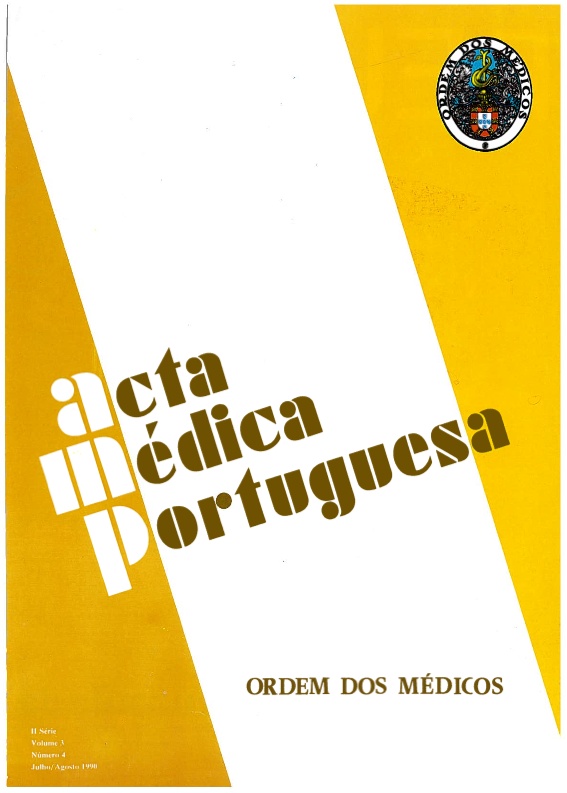Hepatite não-A, não-B: hepatite C.
DOI:
https://doi.org/10.20344/amp.4574Resumo
Non-A, non-B hepatitis (NANB), whether following the transfusion of blood products or occurring sporadically without percutaneous exposure, is complicated in approximately 50% of cases by the development of chronic hepatitis. Emerging as a consistent observation is the insidious progression of such cases of chronic NANB hepatitis to cirrhosis. Among patients with chronic NANB hepatitis followed for up to 10 years, cirrhosis is demonstrable in 20%. In May, 1988, the identification of the agent of NANB hepatitis was described by Houghton and colleagues of the Chiron Corporation. Hepatitis C, a 10,000 nucleotide single-stranded RNA virus with properties similar to those of flavivirus, was identified by developing a cDNA library from the genetic material in a chimpanzee inoculum of high infectivity and locating a clone which elaborated a virus-specific protein. Serologic evidence for HCV infection can be detected in 60-90% of cases of transfusion-associated hepatitis and 50% of cases of sporadic NANB hepatitis. Antibody to HCV (anti-HCV) can be detected in 30% of chronic hepatitis B, in 10-46% of alcoholic cirrhosis, in 40-70% of cases of hepatocellular carcinoma HBsAg negative and in 0-83% of patients with auto-immune chronic active hepatitis. Assays for HCV antigen will require technology more sensitive such than current immunoassays, such as the polymerase chain reaction. The introduction into blood banks of a screening test for anti-HCV is expected to reduce the risk of transfusion-associated NANB hepatitis and is highly recommended.Downloads
Downloads
Como Citar
Edição
Secção
Licença
Todos os artigos publicados na AMP são de acesso aberto e cumprem os requisitos das agências de financiamento ou instituições académicas. Relativamente à utilização por terceiros a AMP rege-se pelos termos da licença Creative Commons ‘Atribuição – Uso Não-Comercial – (CC-BY-NC)’.
É da responsabilidade do autor obter permissão para reproduzir figuras, tabelas, etc., de outras publicações. Após a aceitação de um artigo, os autores serão convidados a preencher uma “Declaração de Responsabilidade Autoral e Partilha de Direitos de Autor “(http://www.actamedicaportuguesa.com/info/AMP-NormasPublicacao.pdf) e a “Declaração de Potenciais Conflitos de Interesse” (http://www.icmje.org/conflicts-of-interest) do ICMJE. Será enviado um e-mail ao autor correspondente, confirmando a receção do manuscrito.
Após a publicação, os autores ficam autorizados a disponibilizar os seus artigos em repositórios das suas instituições de origem, desde que mencionem sempre onde foram publicados e de acordo com a licença Creative Commons









